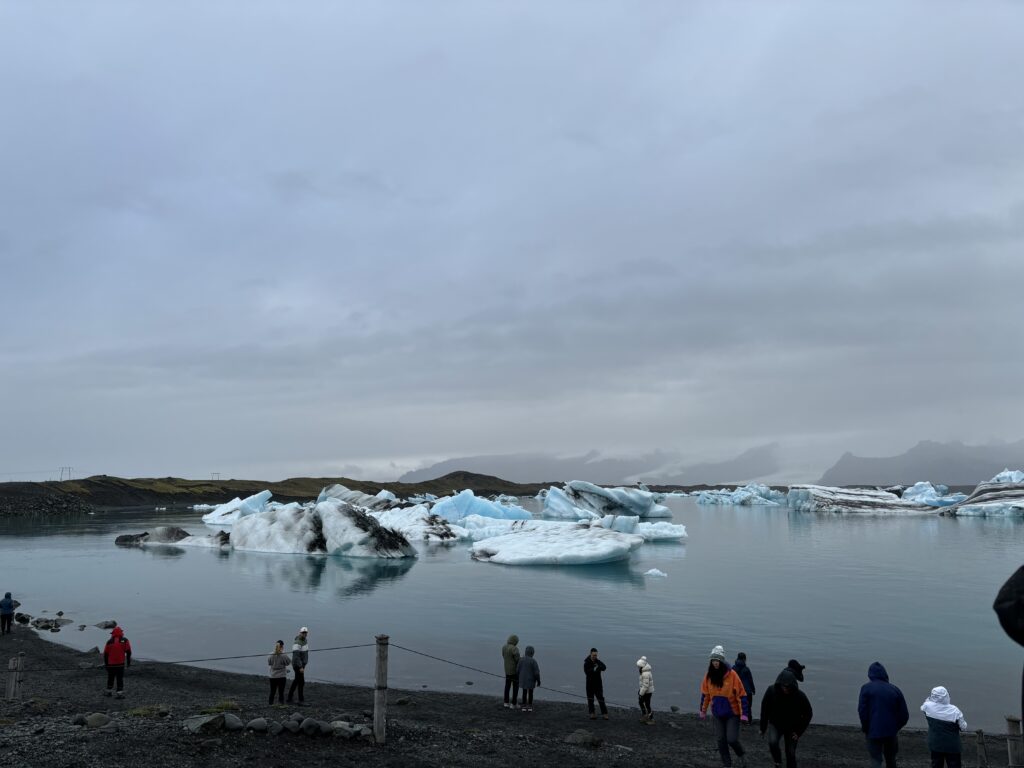Our Iceland Adventure Turned into a Climate Crisis Wake-Up Call
The Jökulsárlón glacier lagoon provides not only aesthetic beauty but it’s a case study in the detrimental effects of climate change and the need to take mitigative action now.
Published September 11, 2024
By Syra Madad, D.H.Sc., M.Sc., MCP, CHEP

On a recent trip to Iceland with my children, we visited the Jökulsárlón glacier lagoon, a place known for its serene beauty, where fractured icebergs from the Breiðamerkurjökull glacier drift across the water. Their ethereal shades of blue and black felt timeless, but in reality, they represent the fragility of an ecosystem being reshaped by climate change.
While sailing through the lagoon, we witnessed massive icebergs drifting across the water, their glistening surfaces reflecting the light in stunning shades of blue. During the excursion, we watched as one of the staff members aboard the boat scooped up a piece of ice from the lagoon—once part of a melted glacier—and took a bite.
For most of the group, this was a fun and quirky highlight of the trip. But as an infectious disease epidemiologist, my thoughts immediately turned to the potential microbes preserved in that ancient ice—microbes that could have been dormant for millennia. Research shows that as glaciers and permafrost thaw due to climate change, long-dormant microorganisms, including potential pathogens, can be released.
Glacial ice can harbor viable infectious pathogens, as evidenced by a recent study which found that over 50% of bacterial cells on glacier surfaces are capable of resuming activity within 24 hours after thawing, highlighting their ability to remain dormant and potentially pathogenic in frozen environments, only to become active under the right conditions.
Public Health and Melting Ice Caps
This experience left me thinking not just about climate change in the abstract, but also about the potential public health consequences of melting ice caps. The possibility of ancient microbes resurfacing is a stark reminder that climate change affects more than just the physical environment—it also has implications for causing future outbreaks.
Jökulsárlón, which didn’t exist before the 20th century, is a direct result of rising global temperatures. This glacial lagoon only began to form around 1935, driven by the rapid retreat of the Breiðamerkurjökull glacier, a process that has accelerated with every passing decade. The lagoon’s surface area has doubled since the 1970s, and it now stands as Iceland’s deepest lake, growing as the ice that once shielded this region melts into history.

The expansion of Jökulsárlón is a living testament to the impact of a warming planet, visible and visceral. This lagoon’s growth is not a triumph of nature’s beauty but a stark reminder of the irreversible transformations happening in our environment.
Every meter of receding glacier signifies the loss of critical ice reserves that have sustained ecosystems for centuries. Iceland’s glaciers are losing significant ice mass each year. For example, a study on Iceland’s glaciers revealed a loss of approximately 9.6 gigatons of ice annually as observed from 1995 to 2019, with half of the total mass loss occurring during this period, reflecting an accelerated rate due to climate change.
The Urgency of Action
As I stood at the lagoon’s edge with my children, I couldn’t help but wonder what kind of world they will inherit. Will these glaciers become distant memories? As a mother, the climate crisis is deeply personal. The wildfires, floods, and extreme heat waves we see across the world are not exceptions but increasingly the new normal, driven by a warming planet.
In Jökulsárlón, the visible melting glaciers underline the urgency of action. Climate change is no longer an abstract concept; it is unfolding right before our eyes. As we approach Climate Week NYC, it is a reminder that the time for action is now. The retreating glaciers of Iceland tell us a story of loss, but they also challenge us to decide what kind of future we will create for the generations to come.
Will we act, or let this pivotal moment pass, forever changing the world our children will inherit?
Stay connected with Dr. Madad:
Instagram
Twitter/X
LinkedIn
Facebook
